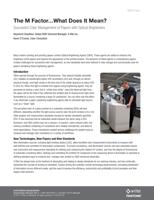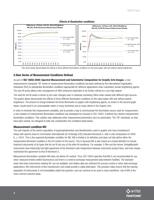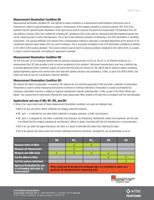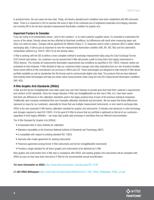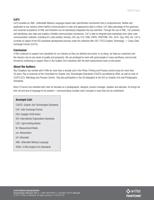Page 1 of 5

The M Factor…What Does It Mean?
Successful Color Management of Papers with Optical Brighteners
Raymond Cheydleur, Global OEM Technical Manager, X-Rite Inc.
Kevin O’Connor, Color Consultant
White Paper
Many modern printing and proofing papers contain Optical Brightening Agents [OBA]. These agents are added to enhance the
brightness of the papers and improve the appearance of the printed product. The presence of these agents in contemporary papers
creates challenges for successful color management, so new standards have been defined to help manage and communicate color for
papers containing these brightening agents.
Introduction
OBAs operate through the process of fluorescence. They absorb invisible ultraviolet
(UV) radiation at wavelengths below 400 nanometers (nm) and, through an electro-
physical change, emit light mostly in the blue end of the visible spectrum at about 400
to 450 nm. When this light is emitted from papers using brightening agents, they are
perceived as having a color that is “whiter than white,” since the observed light from
the paper will be the total of the reflected and emitted (due to fluorescence) light when
illuminated by a source containing a large UV component. You can often see this effect
if you illuminate a paper containing brightening agents with an ultraviolet light source,
such as a “black” light.
The perceived color of a piece printed on a substrate containing OBAs will look
different, depending whether the light source used to view the print contains UV or not.
Older graphic arts measurement standards (except for density standards) specified
D50. It was assumed that all substrates would measure the same using a D50
illuminant, and OBA content was not a concern. In practice, colors viewed under real
viewing conditions containing UV sometimes were notably mismatched, and failed to
meet expectations. These mismatches created serious challenges for people trying to
measure and manage color consistency in a variety of workflows.
New Technologies, New Papers and New Standards
New illumination sources, including light emitting diodes [LED], allow handheld color measurement instruments to measure with
well-defined and controlled UV illumination components. To ensure consistency, new illumination sources and new substrates require
new instrument and measurement standards for defining and measuring the relative UV content, and thus the degree of fluorescence
of substrates containing OBAs. Defining and controlling the emitted UV component of the measuring device’s illumination is essential to
defining standard ways to measure and manage color printed on OBA-enhanced substrates.
X-Rite has always been at the forefront of advocating and helping to design standards for our evolving industry, and has continually
advocated the concept of printing to standards. Factors driving this evolution include technology advancements, increasing distribution
of information across different media, and the need to improve the efficiency, productivity and profitability of print providers and their
supply chain partners.
X-Rite World Headquarters
Grand Rapids, Michigan USA • +1 800 248 9748 • +1 616 803 2100 • xrite.com
© 2011 X-Rite, Incorporated. All rights reserved. L7-510 (01/12)

